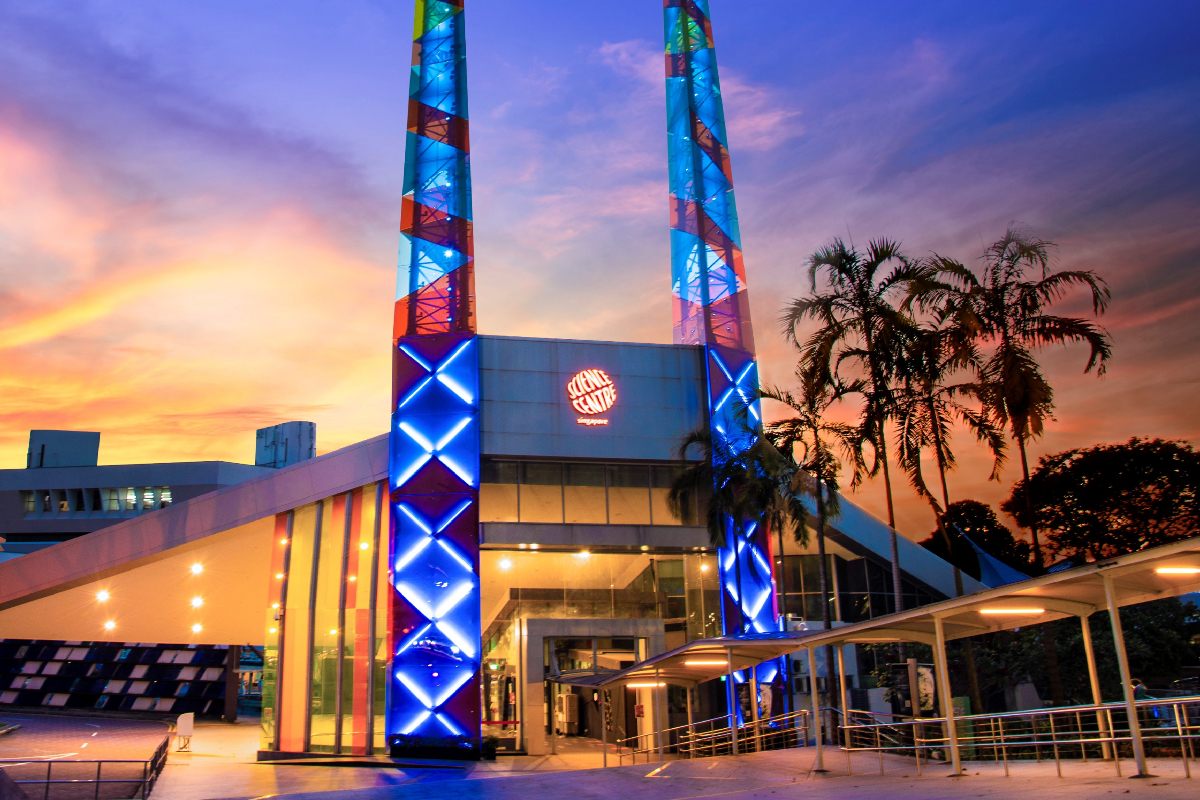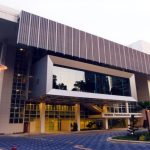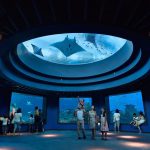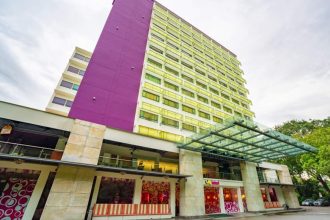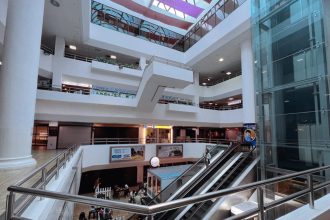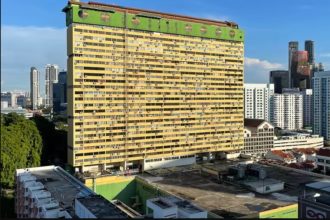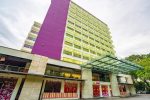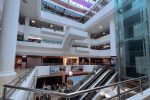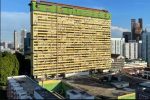Key takeaway
Raymond Woo imagined the Science Centre Singapore as more than a building; he designed it as a spaceship for the mind. His vision made science feel vivid, accessible, and playful, while grounding the institution firmly in Jurong. As the Centre shifts to a new waterfront home in Jurong Lake District, his founding spirit still guides that journey: designing for people, learning, and community.
The Science Centre Singapore stands not only as a hub for science but as a tribute to the architect who shaped its original form. Raymond Woo’s vision has helped define its character, and now, as the Centre moves to a new waterfront campus in Jurong, his influence helps chart the future.
The Origin Story: Raymond Woo’s Launchpad in Jurong
Raymond Woo first made his mark when he won the design competition for the Science Centre, back in the early 1970s. His design was bold; critics called it a spaceship, an inverted cup, or even a moon buggy. But Woo’s concept was deliberate: he wanted a building that would both intrigue and educate.
The Centre was built on a roughly 60,000 sqm site in Jurong East, at a cost of around S$12 million. It officially opened on 10 December 1977, and since then has inspired generations with hands‑on learning.
Designing for People First
For Woo, architecture was never just about form; it was about the people inside. At the President’s Design Award, he explained that every building must engage its users. In his words: “End‑users are the most important part of the building.”
That ethos is clear in the Science Centre. He designed large, open galleries and flexible spaces so students, teachers, families, and curious visitors could explore, experiment, and gather without feeling boxed in. This approach mirrors other Singapore theme park history, where the focus remained on engaging visitors in playful learning environments.
Architecture as Symbol: The Centre’s Form and Legacy
Woo’s geometric sense came through in the Centre’s structure. His design used a triangular plan, which helped him arrange exhibition halls efficiently while creating a striking silhouette. This disciplined geometry gave the building its sculptural presence without sacrificing function.
Over the years, the Centre grew. The Omni‑Theatre, an IMAX‑dome theatre, opened in 1987. In 2000, Snow City joined Singapore’s first permanent indoor snow centre. Through each expansion, Woo’s original masterplan remained central to how the Centre functioned and grew. Visitors could also experience other maritime science attractions that complement hands-on learning.
The New Science Centre in Jurong Lake District: Keeping the Spirit Alive
Fast forward to today, and a new chapter is opening. A completely new Science Centre is being built in Jurong Lake District, next to the Chinese Garden MRT station. The design is by Zaha Hadid Architects, together with local firm Architects 61.
The new building will cover about 55,000 sqm, roughly 25 per cent larger than the current Centre, on a 7.4-hectare plot. It is set to open at the end of 2027, in time for the Centre’s 50th anniversary.
Importantly, the new Centre is not just a science museum; it’s a community hub. It blends with Jurong Lake Gardens and offers outdoor science exhibits, nature trails, and plazas. These outdoor spaces echo Singapore’s growing network of green learning spaces that connect people with nature.
How Raymond Woo’s Vision Still Guides the Future
Though the architect behind the new building is different, Woo’s foundational ideas still echo in the plan:
- Human-centered design: The new Centre promises universal design principles so people of all abilities can engage with exhibits.
- Integration with nature: Gardens, courtyards, and trails surround the building, science and green space blending as one.
- Learning beyond walls: Outdoor exhibits, observatory, and night programming are all part of the plan to bring STEM to life.
Five New Features That Reflect a Legacy
Here are some key highlights of the new Centre, features that connect back to Woo’s original vision:
- A rooftop observatory for stargazing and public astronomy.
- Hands‑on galleries designed for all ages, including children’s zones more than twice the size of the current KidsSTOP.
- Night-time “after-dark” programming to bring adult visitors into a playful, exploratory mode.
- Sensory trails and water-play areas in the landscaped roof garden.
- Partnerships with schools, universities, and industry to co-create STEM learning experiences.
Engaging the Community Beyond Exhibits
The Science Centre Singapore has always extended its reach beyond its walls. Under Raymond Woo’s vision, the Centre became a hub for school excursions, science fairs, and hands-on workshops. Teachers and students could participate in specially designed programs that reinforced curriculum learning while making science fun. Community engagement also includes public lectures, maker sessions, and family-focused events that allow visitors to experiment, question, and learn together. Seasonal events, such as science-themed festivals and outdoor demonstrations, invite the wider public to interact with science in informal settings. These programs reflect Woo’s philosophy that science should be alive, interactive, and accessible to everyone, regardless of age or background. By prioritizing engagement, the Centre not only showcases exhibits but also builds a culture of curiosity and collaboration, fostering lifelong interest in science across Singapore’s diverse communities.
A Tribute to Raymond Woo Through Time
Woo’s architecture for the original Centre was more than functional. It was aspirational. He imagined a building that would spark imagination, not just show science. Every gallery, every open space, and even the circulation paths were designed to encourage curiosity and discovery. The building itself became a teaching tool, demonstrating the principles of design, geometry, and human-centered planning. Visitors often remarked on how the architecture seemed to guide their learning experience, creating moments of surprise and delight at every turn.
When the Centre moves to its new home in Jurong Lake District, it will carry that same philosophy: community design, with room to dream. The new Centre will expand this legacy through larger interactive exhibits, outdoor science spaces, and programs that invite families and schools to engage with science in playful ways. By preserving the spirit of Raymond Woo’s vision, the Centre continues to inspire wonder and learning for generations to come.
Science Centre Singapore and Related Buildings
Beyond the main Science Centre Singapore building, several related sites and facilities have contributed to its long-standing reputation as a hub for learning and innovation. From specialized theatres to future expansions, these buildings demonstrate how the Centre’s vision has grown over time while maintaining its core mission of making science engaging and accessible.
| Building | Key facts | Nearest MRT | Sources |
|---|---|---|---|
| Science Centre Singapore (original) | Opened in 1977, ~60,000 sqm site, designed by Raymond Woo; more than 850 exhibits in 8 galleries. | Jurong East MRT (8-minute walk) | Official website |
| Omni‑Theatre (part of Centre) | Large-format dome theatre and observatory; opened 1987. | Jurong East MRT | Official website |
| New Science Centre (future) | ~55,000 sqm, 7.4 ha, opening end‑2027 next to Jurong Lake Gardens; designed by Zaha Hadid Architects & Architects 61. | Chinese Garden MRT | Official website |
Raymond Woo’s Vision Still Alive Along Jurong’s Lakeside
As the Science Centre Singapore makes its move to a new home on the lakefront, the very principles Raymond Woo laid down remain at its core. He once designed for curious schoolchildren, adventurous families, and lifelong learners. The new centre is poised to continue that mission in a refreshed, nature-rich setting. Anyone interested in the wider history of science education can see how these ideas influenced the design of immersive, hands-on learning spaces over decades. The Centre’s lakeside location will allow for outdoor experiments and science-themed community events that extend learning beyond the walls. Its evolving exhibits promise to keep engaging visitors while staying true to Raymond Woo’s original vision of making science accessible and exciting for everyone.
